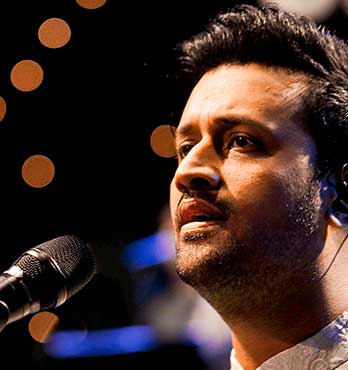Wohi Khuda Hai

by Ayesha binte Rashid
When it comes to iconic memories of music, poetry and culture in Pakistan, Wohi Khuda Hai remains a piece that invites one to take a moment and sing along. Written by Muzaffar Warsi and made iconic in the voice of Ustad Nusrat Fateh Ali Khan, its lyrics ask the listener to take a pause and look within and around oneself. Warsi calls attention to the nizaam-e-hasti, the system of the universe. Every day the sun rises in the East and, when it sets in the West, starlight illuminates the night sky - the world never completely shrouded in darkness. The planets revolve around the sun in their orbits, spinning on their centres. Our ever-expanding universe is filled with stars that live and die in a cycle of death and rebirth, a cycle that is acted out on our own planet. There is a rhythm to the system of the cosmos and Wohi Khuda Hai celebrates the Divine Intelligence keeping this order.
In Pakistan’s cultural memory, Wohi Khuda Hai is picturized on Ustad Nusrat Fateh Ali Khan, singing the hamd on PTV. Khan Sahab sings on a completely black set, standing at an ornate dais. Dressed in a light, gray kurta, he is lit by a spotlight, causing his shadow to fall majestically behind him. The hamd has since been sung in many voices, during school assemblies in naat competitions, at musical gatherings in homes, on religious shows aired during the month of Ramzan. Somewhere, at some point, the melody was heard and remains unmistakably etched in our collective memory.
Hamd is a literary genre of poetry that reserves its praise exclusively for God and Wohi Khuda Hai does so with sincerity and directness. It doesn’t hide this praise in metaphors or subtext -- its couplets are expressive and poetic, in words that can be understood and felt by those who see Divine Power in the universe. As verses change, so does the subject: from the cosmos to a more intimate relationship with the Divine -- it is He who illuminates our subconscious minds, the poet says. As the piece ends, the poetry reminds one to look for the Divine around oneself, in the presence of creation, in nature, in the setting and rising of the sun, and the changing of seasons.
When Khan Sahab sang these words from the aforementioned black dais, the blend of poetry and melody lodged itself in popular culture. Covered often, its musical arrangement has crossed genres. On YouTube, one can find non-musical versions of it, as well as musical versions in which the poetry can be heard over spacey and ambient compositions, or in ethnical musical arrangements, over acoustic instruments and percussions with Eastern grooves. The hamd can be heard in somber compositions that give it a hint of grandness, with echoing backings vocals and synths, as well as in upbeat versions, with clapping and keyboards.
Khan Sahab’s melody seems to fit in a number of settings: a cellphone video, made at a church event, shows a group of children singing it on stage. In another video, we see a crowd of men sitting under a white shamiyana (tent) at a village gathering, listening to a live band playing Wohi Khuda Hai on two dhols, a harmonium and a shehnai. A recording can, of course, be found of Ustad Rahat Fateh Ali Khan singing it. He is performing at London’s O2 Arena, his voice accompanied by a piano and saxophone. To call the hamd iconic would not be incorrect, it was made famous by Khan Sahab and claimed by the people, taking on culture’s shapes and colors as it traveled in their voices.
In 2019, the hamd is finding shape in Atif Aslam’s voice as he continues to experiment with melodies on Coke Studio’s canvas. With a poetic genre he’s never performed before, Atif takes the stage in his own rendition of Wohi Khuda Hai, not claiming it as his own but, rather, accepting it as a gift. “I feel like this just happened; it was in my luck. Allah gave me this opportunity; this is His blessing.”
Coke Studio’s rendition presents Atif Aslam in a space that offers an exploration of the essence of the hamd, by witnessing the play of an ambient soundscape that serves the contemplative nature of the verses. Atif’s voice carries in a space of echoing vocals that is meant to bring the words to life. Etched into the framework of Pakistan’s cultural memory, Wohi Khuda Hai is an exploration of wonder and awe at the capacity and ability of Creation and a means to reflect on its beauty.
For Atif, the pull towards recreating this piece lies in the act of remembrance itself: “Just thinking of the Creator, He who is without any equal, who has created everything we know of and even that which we know nothing about, makes me feel a peculiar cheer and happiness. There is joy just in the thought of Him.”
